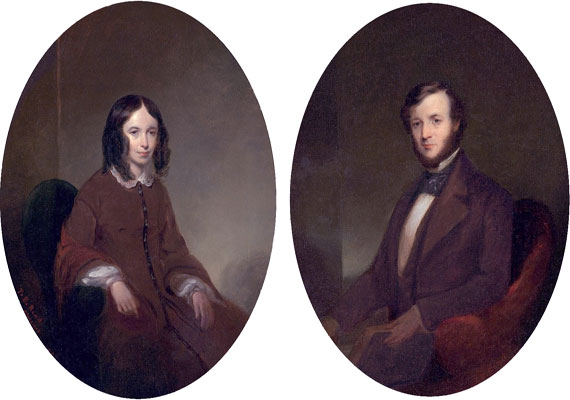Even during his childhood, the author Ray Bradbury showed his affinity towards eccentric topics like the supernatural and the alien. This famous American writer was born in the 1920s in Illinois, USA. He is known even today for his great imaginative stories where he combines the worldly with the other worldly to shock his readers and make them think from a new perspective.
In this story the author deals with the absence of sunlight and how it can affect both the psychology and the physicality of a human being. The planet Venus has been depicted as a tangled and inhospitable wasteland. The people living on it have also become unruly and cruel. When the sun finally does come out for a brief period of time they are joyful and energized, suggesting the power of the sun to bring physical and mental health. Through this abrupt transition, the readers as well as the characters of the story realize the pains of the new little girl named Margot.
All Summer in a Day: Plot & Setting
Margot arrived on Venus from Earth five years ago, so, unlike the other children, she remembers the sun and the sky very well from her childhood. Sometimes she describes the sun, but William and the other children claim she is lying. For the most part, she keeps to herself and avoids the touch of water. Her parents may move the family back to Earth, since Margot is suffering so much. All of these things make William and the other children jealous and angry.
When the other children attempt to discredit Margot’s memories, it is because they are jealous of her experiences and frustrated by circumstances over which they have no control. We also learn that Margot is privileged not just because she remembers the sun, but also because her parents are wealthy enough that they may be able to move the family back to Earth, providing more fodder for the children’s jealousy. Margot closes herself off from others because her memories are so important to her that she would rather focus on them.
All Summer in a Day: Summary
A group of children press against the window of their underground classroom on the planet Venus, watching as the rain outside begins to slow. It has been raining endlessly for years—on Venus, the sun comes out once every seven years, but only for an hour, and today is the day when scientists predict that the sun will appear. The world outside is awash with tidal waves and a perpetually growing and collapsing jungle. These children are the first to grow up on the planet, which was colonized by rockets from Earth the generation before. In their eagerness, the children are tumbled together like unruly weeds. One child, Margot, stands apart. Like all the children, she is nine years old. This means that most of the children can’t remember when the sun last came out, even though they dream about what it was like and long to feel its warmth.
The day before, the schoolchildren had read about the sun and written short stories or poems about it. When Margot quietly read her poem comparing the sun to a flower aloud to the class, another boy, William, exclaimed that she didn’t actually write it. Their teacher reprimanded him. The other students pick on Margot in ways that seem initially not to make much sense: in this scene, for example, Margot is simply participating in a class activity. But William’s actions are motivated not by Margot’s actions, but by the fact that Margot has special knowledge of the sun that allows her to write poems and share detailed memories. The children are jealous that Margot has had such experiences and use her as a scapegoat for their own feelings of deprivation about the sun. Claiming that Margot is lying when she speaks about the sun is one way for William to gain power over her, and, by extension, the imbalance in their situations. In this scene, we also see the power that the sun continues to hold for Margot. She romanticizes her memories of it and briefly comes out of her shell only when she is able to express her interest in the sun.
But back in the classroom, the children are unsupervised as they wait feverishly by the windows. They worry that their teacher won’t return in time, and that this will cause them to miss the sun. Margot continues to watch and listen to the rain by herself. She is very frail and pale, as if all of the color has been drained from her. William asks Margot what she’s looking at. When she doesn’t respond, he shoves her, but she still doesn’t react and the other children edge away. Margot herself usually eschews the company of other children, refusing to play games or sing songs unless they are about the sun. Again, William tries to engage Margot in conflict even though her behavior is inoffensive. This is another example of William venting his sense of jealousy and deprivation on Margot, showing that these feelings can be strong motivators of bullying. But we also see that Margot herself may have exacerbated her isolation: she makes no secret of the fact that she looks down on life on Venus, emphasizing the privileged life she led on Earth. Another perspective on Margot’s isolation here is that she continues to be obsessed by memories of the past, to the extent that she cannot enjoy the present. This shows that strong nostalgia, like the nostalgia that Margot experiences for the sun can prevent those who experience it from finding happiness in the present.
Suddenly, the rain returns in force and the sky darkens with thunder. The children run back to the classroom, where they peer out at the deafening rain that seems as if it will continue falling everywhere and forever. They ask if it will really be seven more years before they see the sun again. Now that they have such a bright memory to compare it to, the normal day-to-day conditions of life on Venus seem unbearable. A moment of intense happiness can make everyday life seem comparatively painful, especially when the moment has been anticipated for so long. The return to waiting brings with it renewed awareness of how painful drawn-out anticipation can be. Already, the children seem transfixed by their brief memory of the sun, just as Margot is. It seems likely that they, too, will succumb to the kind of nostalgia that hindered Margot. Suddenly, one of the children remembers Margot. The children realize she is still locked in the closet, and they stand frozen in place, unable to meet each other’s eyes. After a few moments, they begin to walk slowly down the hall as the rain and lightning rage outside.
Perhaps because they now share this emotional understanding of Margot’s painful nostalgia, the children suddenly remember her. Experiencing the sun has not only made them feel happy and healthy but given them the experience and maturity to realize the magnitude of their actions and to feel guilt. This is another way that the importance of nature is emphasized. Now that they can relate to Margot, the motivations for their bullying have been taken away. The children stand for a moment before the closet, which is now silent. Slowly, they unlock the door and let Margot out.
Some online learning platforms provide certifications, while others are designed to simply grow your skills in your personal and professional life. Including Masterclass and Coursera, here are our recommendations for the best online learning platforms you can sign up for today.
The 7 Best Online Learning Platforms of 2022
- Best Overall: Coursera
- Best for Niche Topics: Udemy
- Best for Creative Fields: Skillshare
- Best for Celebrity Lessons: MasterClass
- Best for STEM: EdX
- Best for Career Building: Udacity
- Best for Data Learning: Pluralsight
















